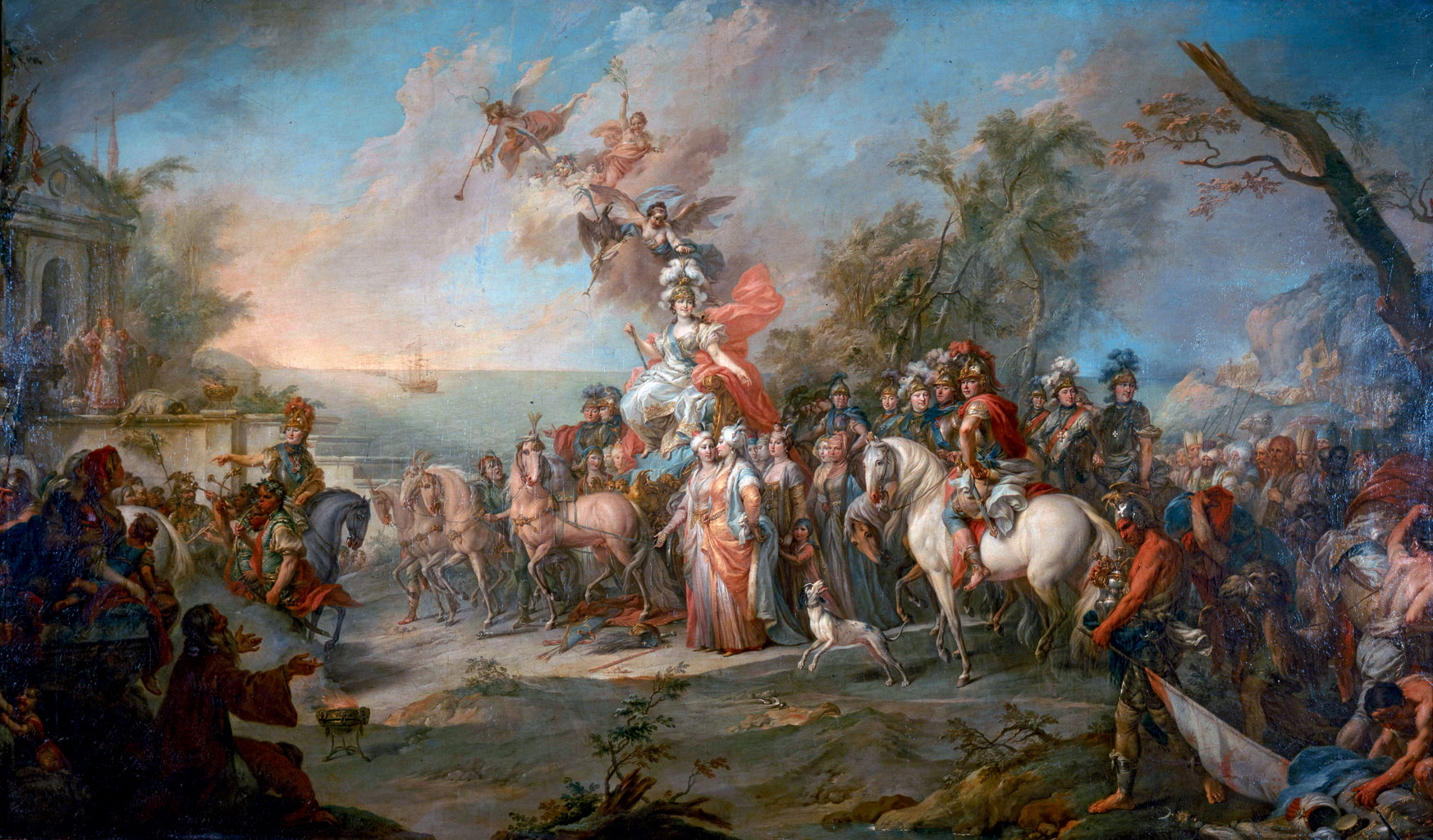
Russo-Turkish War (1768–1774)
The Russo-Turkish War of 1768–1774 was a major armed conflict that saw Russian arms largely victorious against the Ottoman Empire. Russia's victory brought the Yedisan between the rivers Bug and Dnieper, and Crimea into the Russian sphere of influence. Through a series of victories accrued by the Russian Empire led to substantial territorial conquests, including direct conquest over much of the Pontic–Caspian steppe, less Ottoman territory was directly annexed than might otherwise be expected due to a complex struggle within the European diplomatic system to maintain a balance of power that was acceptable to other European states and avoided direct Russian hegemony over Eastern Europe.[1]
Nonetheless, Russia was able to take advantage of the weakened Ottoman Empire, the end of the Seven Years' War, and the withdrawal of France from Polish affairs to assert itself as one of the continent's primary military powers.[2] The war left the Russian Empire in a strengthened position to expand its territory and maintain hegemony over the Polish–Lithuanian Commonwealth, eventually leading to the First Partition of Poland. Turkish losses included diplomatic defeats that saw its decline as a threat to Europe, loss over its exclusive control over the Orthodox millet, and the beginning of European bickering over the Eastern Question that would feature in European diplomacy until the Dissolution of the Ottoman Empire in the aftermath of World War I.
Mediation and ceasefire[edit]
Prussia, Austria, and Great Britain offered to mediate the dispute between Russia and the Ottomans to halt Russia's expansion.[21] Austria managed to turn the situation to its advantage by gaining Bukovina District from the Ottomans with a treaty on July 6, 1771. The Austrians maintained their increased military presence on their border with Moldavia and Wallachia, and they increased a subsidy to the cash-starved Ottomans, who had been dabbling in tax farming[22]) and offered unsubstantiated support to the Ottomans against Russia. Catherine II, wary of the proximity of the Austrian army to her own forces and fearing an all-out European war, accepted the loss of Poland and agreed to Frederick II's plan to partition Poland. She secretly agreed to return the captured principalities back to the Ottomans, thereby removing Austria's fear of a powerful Russian Balkan neighbour. On April 8, 1772, Kaunitz, the Austrian equivalent of Minister of Foreign affairs, informed the Sublime Porte that Austria no longer considered the treaty of 1771 binding.[23]
A ceasefire between Russia and the Ottoman Empire commenced on May 30, 1772, but real negotiations did not begin until August 8. The peace talks broke down almost immediately over the Crimea, but the truce was extended until March 20, 1773.
Both parties had reasons to expand the negotiations, primarily to do with both sides wanting to keep fighting on a single front. The Ottomans were now quelling rebellions from Egypt and Syria and also faced incursions from Persia. The Russians were facing a revival of a centralized Sweden, which had undergone a coup from King Gustav III.
Final Russian offensive[edit]
On June 20, 1774, the Russian army, under the command of Alexander Suvorov, managed to rout the Ottoman army near Kozludzha. Russia used the victory to force the Ottoman Empire to acquiesce to Russia's preferences in the treaty.[24]
On July 21, 1774, the Ottoman Empire had to sign perforce the Treaty of Küçük Kaynarca.[25] The treaty did not overtly take away vast territories from the Ottomans – Poland had already paid the price of alienated territory. According to the treaty:[26]
As a consequence of the treaty, the Ottomans ceded the northwestern part of Moldavia (later known as Bukovina) to the Habsburg Empire.[28]
Russia quickly exploited Küçük Kaynarca for an easy excuse to go to war and take more territory from the Ottoman Empire.[29]
This war comprised but a small part of the continuous process of expansion of the Russian Empire southwards and westwards during the 18th and 19th centuries.